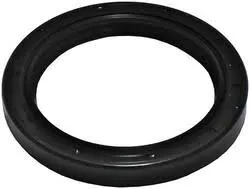8 月 . 12, 2024 18:52 Back to list
Understanding the Importance of Front Hub Oil Seals in Vehicle Maintenance and Performance
Understanding Front Hub Oil Seals Importance and Maintenance
In the world of automobiles, the front hub oil seal plays a crucial role in ensuring the smooth operation of the vehicle's wheel hub assembly. Situated at the connection point between the hub and the axle, the oil seal serves as a barrier that prevents lubricant from leaking out while also keeping dirt, debris, and moisture from entering the hub assembly. Understanding the significance of front hub oil seals, their functions, and maintenance can greatly impact the longevity of your vehicle and the efficiency of its performance.
Key Functions of Front Hub Oil Seals
1. Lubrication Retention One of the primary functions of an oil seal is to retain lubricant within the wheel hub. This lubricant is essential for the smooth functioning of the bearings and other components within the hub assembly. A well-lubricated hub minimizes friction, which leads to reduced wear and tear, ultimately increasing the lifespan of the wheel and its associated parts.
2. Contaminant Prevention Oil seals act as a shield against external contaminants. A hub is exposed to various elements such as water, dirt, and grime, which can compromise the integrity of internal components. By effectively sealing off the hub, the front hub oil seal helps maintain a clean working environment, ensuring the bearings remain operational and free of destructive contaminants.
3. Pressure Management During vehicle operation, pressure can build up within the hub due to heat and movement. Oil seals help manage this pressure by creating a tight seal that maintains optimal conditions inside the hub assembly. This is vital to preventing premature failure of hub components.
Signs of Oil Seal Failure
Despite their durability, front hub oil seals can wear out over time. Recognizing the signs of oil seal failure is critical for preventing more extensive damage. Some common indicators include
- Oil Leaks If you notice oil pooling around the wheel hub or drips on the ground, it may indicate that the oil seal has failed, allowing lubricant to escape. - Noise Unusual noises, such as grinding or whining, can signify that the bearings inside the hub may not be adequately lubricated due to a compromised seal.
front hub oil seal

- Excessive Heat A significant increase in wheel temperature can occur when the lubricating oil is leaking, leading to overheating and further damage
.Maintenance Tips
To ensure the longevity of front hub oil seals, regular maintenance checks are essential. Here are a few tips
1. Regular Inspections Frequently inspect the wheel hubs and surrounding areas for any signs of oil leakage or damage. Early detection allows for proactive maintenance.
2. Lubrication Checks Periodically check the levels of lubricant in the hub assembly. If the levels are low, it might indicate a failing seal.
3. Replace When Needed If you notice signs of wear or leakage, replace the oil seal immediately. Ignoring a failing seal can lead to more severe damage and costly repairs.
4. Professional Servicing Consider having your vehicle serviced by a professional mechanic. They can perform thorough inspections and replace any damaged components, including oil seals, ensuring optimal performance.
Conclusion
The front hub oil seal, while a relatively small component, plays a vital role in the overall functionality of a vehicle. By ensuring proper lubrication, preventing contamination, and managing internal pressure, these seals help enhance the performance and longevity of automotive systems. Regular maintenance and timely replacement of worn or damaged oil seals can prevent costly repairs and ensure that your vehicle operates smoothly for years to come. Understanding and caring for these essential components will contribute to a more reliable driving experience, underscoring the importance of seemingly minor parts in the grand scheme of vehicle maintenance.